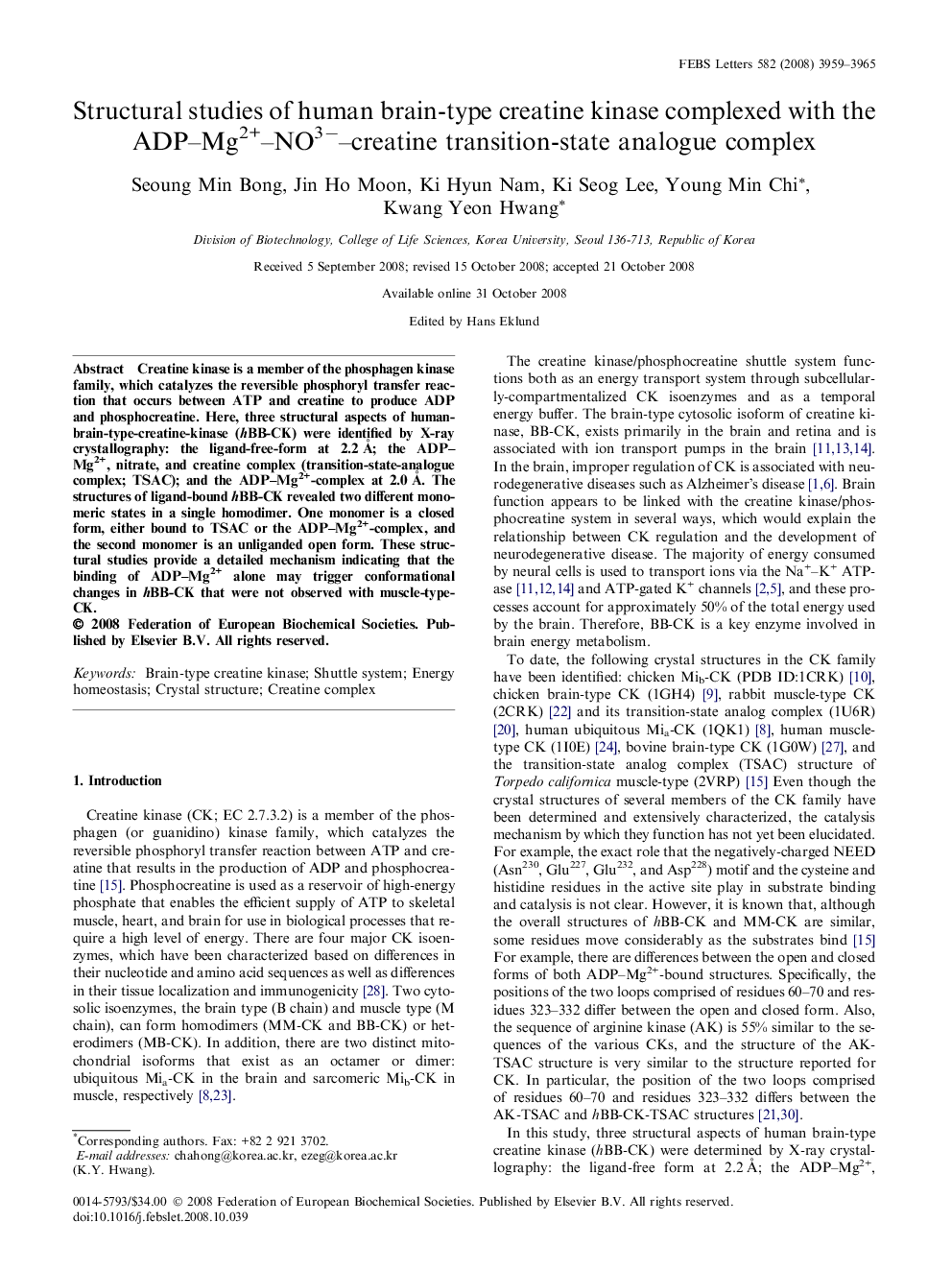| Article ID | Journal | Published Year | Pages | File Type |
|---|---|---|---|---|
| 2049730 | FEBS Letters | 2008 | 7 Pages |
Creatine kinase is a member of the phosphagen kinase family, which catalyzes the reversible phosphoryl transfer reaction that occurs between ATP and creatine to produce ADP and phosphocreatine. Here, three structural aspects of human-brain-type-creatine-kinase (hBB-CK) were identified by X-ray crystallography: the ligand-free-form at 2.2 Å; the ADP–Mg2+, nitrate, and creatine complex (transition-state-analogue complex; TSAC); and the ADP–Mg2+-complex at 2.0 Å. The structures of ligand-bound hBB-CK revealed two different monomeric states in a single homodimer. One monomer is a closed form, either bound to TSAC or the ADP–Mg2+-complex, and the second monomer is an unliganded open form. These structural studies provide a detailed mechanism indicating that the binding of ADP–Mg2+ alone may trigger conformational changes in hBB-CK that were not observed with muscle-type-CK.
